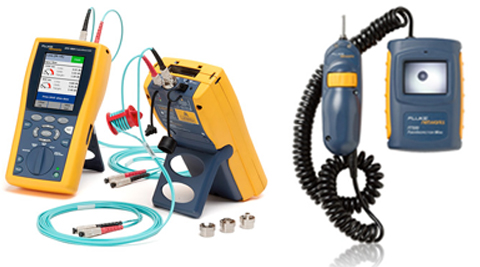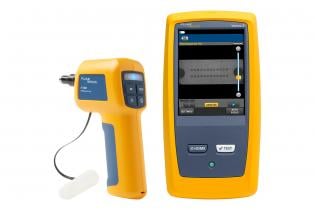A Comprehensive Guide to Optical Measurement System for Fiber Analysis
When it pertains to fiber evaluation, understanding optical dimension systems is essential for reviewing performance and making sure top quality. You'll explore vital techniques like interferometry and spectroscopy, which assist you gauge key specifications. However there's even more to it than simply these approaches; mastering attenuation measurement methods can substantially influence your network's efficiency. As you browse via this guide, you'll uncover insights that could transform your method to optical fiber.
Understanding Optical Measurement Systems
When you check out optical measurement systems, you'll discover they're vital for examining fibers with precision. These systems utilize light to assess various characteristics of fibers, including size, refractive index, and harmony. By using strategies like interferometry and spectroscopy, you can gain valuable insights right into the fiber's properties.You'll locate that these systems are created to lessen errors and enhance precision, ensuring trustworthy data for your analysis. Various arrangements, such as single-mode and multi-mode systems, satisfy particular fiber types, enabling you to select the very best fit for your needs.Moreover, the integration of advanced software program devices assists you interpret the information efficiently, making it simpler to recognize any kind of variances or problems. As you investigate much deeper into these measurement systems, you'll appreciate just how they enhance the analytical procedure and improve the total high quality of fiber manufacturing and testing.
Trick Specifications for Fiber Evaluation
Secret parameters for fiber evaluation play a vital function in identifying the top quality and performance of fiber optics. When you assess a fiber, you'll intend to concentrate on features such as attenuation, data transfer, and modal diffusion. Attenuation gauges the loss of signal stamina as light trips through the fiber. A lower depletion value suggests far better high quality and longer transmission distances - fibre testing equipment.Bandwidth describes the data-carrying capacity of the fiber and is important for high-speed interaction. You'll need to examine the transmission capacity to ensure it fulfills your application requirements. Modal dispersion, which emerges from the various rates at which light travels with numerous settings in multimode fibers, affects signal clearness
Strategies for Attenuation Measurement
Transmission capacity and Its Effect On Performance
Understanding data transfer is essential for enhancing fiber performance, as it straight influences the amount of information that can be transmitted over a network. Higher transmission capacity suggests you can send out more info simultaneously, enabling faster communication and much better overall performance. When you're dealing with optical fibers, it's essential to think about how transmission capacity interacts with fiber features, such as core size and product properties.If the data transfer is restricted, you might experience information loss or slower rates, impacting your applications. In addition, different sorts of fibers can support differing data transfer levels, so it is necessary to pick the ideal fiber for your certain needs.You ought to also remember that ecological aspects, like temperature and external disturbance, can influence data transfer. By recognizing these facets, you can make educated decisions to improve your fiber optic systems, guaranteeing dependable and reliable information transmission.
Refractive Index Measurement Approaches

Total Inner Representation
Complete inner representation (TIR) acts as a fundamental principle for measuring the refractive index of fibers. When light trips from a denser tool to a much less dense one, it can only be totally shown if the angle of occurrence surpasses a details limit, called the crucial angle. This phenomenon allows you to figure out the refractive index by assessing the angles at which light shows or refracts. By utilizing a setup that guides light right into a fiber and determines the resulting angles, you can calculate the refractive index properly. Recognizing TIR not just boosts your fiber analysis however additionally improves the design and performance of optical systems. Leveraging TIR can lead to much more efficient fiber-based applications.
Interferometric Techniques
Structure on the principles of total inner representation, interferometric methods give a powerful methods for determining the refractive index of fibers with high accuracy. These approaches exploit the interference patterns produced when beams split and recombine after traveling different courses. You can make use of configurations like the Michelson or Mach-Zehnder interferometer to evaluate phase changes triggered by changes in refractive index. By meticulously calibrating your system and examining the resulting edges, you can establish the refractive index with impressive accuracy. It's crucial to maintain secure ecological problems to minimize errors. With these techniques, you'll boost your understanding of fiber homes, causing better performance in numerous applications, from telecoms to sensor innovation.
Modal Diffusion and Its Importance
Modal diffusion describes the dispersing of light pulses as they take a click for more info trip through a fiber, which can impact the overall efficiency of the system. You'll see that this sensation can cause indicate distortion, affecting data transmission prices and quality. Understanding its significance is essential for enhancing fiber optic styles.
Meaning of Modal Dispersion
In fiber optics interactions, modal diffusion plays a substantial role in determining signal high quality and transmission rate. It occurs when various light modes travel at differing rates via the fiber. Given that each setting has distinct courses and qualities, they can reach the receiving end at various times. This time difference can cause indicate spreading and distortion, which can break down the total performance of the interaction system. You may come across modal dispersion mainly in multimode fibers, where the several courses of light aggravate the concern. Recognizing modal diffusion is crucial for enhancing fiber styles and making certain that your interaction systems run efficiently, preserving the honesty of the transmitted signals over longer ranges.
Effects on Fiber Performance
Recognizing modal diffusion aids highlight its effects on fiber performance. This phenomenon happens when different settings of light travel at varying speeds within the fiber, bring about signify dispersing with time. As you analyze fiber optics, you'll discover that raised modal dispersion can substantially degrade signal quality, resulting in reduced transmission capacity and longer transmission ranges. In practical terms, this means your information can get here altered or delayed, impacting overall communication effectiveness. To alleviate these impacts, you may think about utilizing single-mode fibers, which minimize modal diffusion. By picking the ideal fiber kind and comprehending how modal diffusion affects performance, you can boost transmission top quality and guarantee reputable check this site out data transfer in your optical measurement systems.
Devices and Technologies for Optical Measurements
When it comes to optical dimensions, a number of cutting-edge tools and modern technologies are at your disposal to enhance fiber analysis. You'll discover fiber optic testers, which examine signal high quality and performance, essential for preserving suitable network efficiency. Optical time-domain reflectometers (OTDRs) are important for finding mistakes and gauging loss over distances, offering in-depth understandings into fiber honesty. Furthermore, spectrometers can examine light ranges, helping you recognize material properties and composition.Don' t overlook the relevance of imaging systems, like electronic microscopes, that enable you to aesthetically evaluate fiber surfaces for flaws. Think about making use of polarization analyzers to gauge stress and anxiety and strain in fibers, which is essential for comprehending their habits under various problems. By leveraging these devices and innovations, you can considerably improve your fiber analysis procedures, ensuring integrity and high efficiency in your optical networks.
Often Asked Concerns
What Are the Costs Connected With Optical Measurement Systems?
The prices linked with optical dimension systems can differ significantly. You'll need to evaluate equipment costs, maintenance fees, software licenses, and possible training expenses. Budgeting very carefully will aid you stay clear of unexpected financial challenges down the line.

How Typically Should Fiber Analysis Be Carried Out?
You must do fiber evaluation regularly, generally every six months or after considerable changes in the atmosphere (optical fibre diameter analyzer). This assures excellent efficiency and aids recognize possible issues prior to they affect your system's performance and dependability
Can Optical Measurement Systems Be Adjusted at Home?
Yes, you can calibrate optical dimension systems in the house, but it requires accuracy. Ensure you comply with the maker's guidelines, use ideal calibration criteria, and double-check your outcomes to guarantee precision in your dimensions.
What Industries Generally Use Optical Measurement Solutions?
You'll discover optical dimension systems widely utilized in markets like telecoms, production, health care, and research. They're important for quality control, fiber analysis, and making sure exact dimensions in different applications, improving performance and accuracy across industries.
Are There Any Type Of Security Interest In Optical Measurement Solutions?
Yes, there are security interest in optical measurement systems. You need to always wear safety eyewear to shield your eyes from intense source of lights and guarantee correct training to take care of equipment safely and prevent accidents.